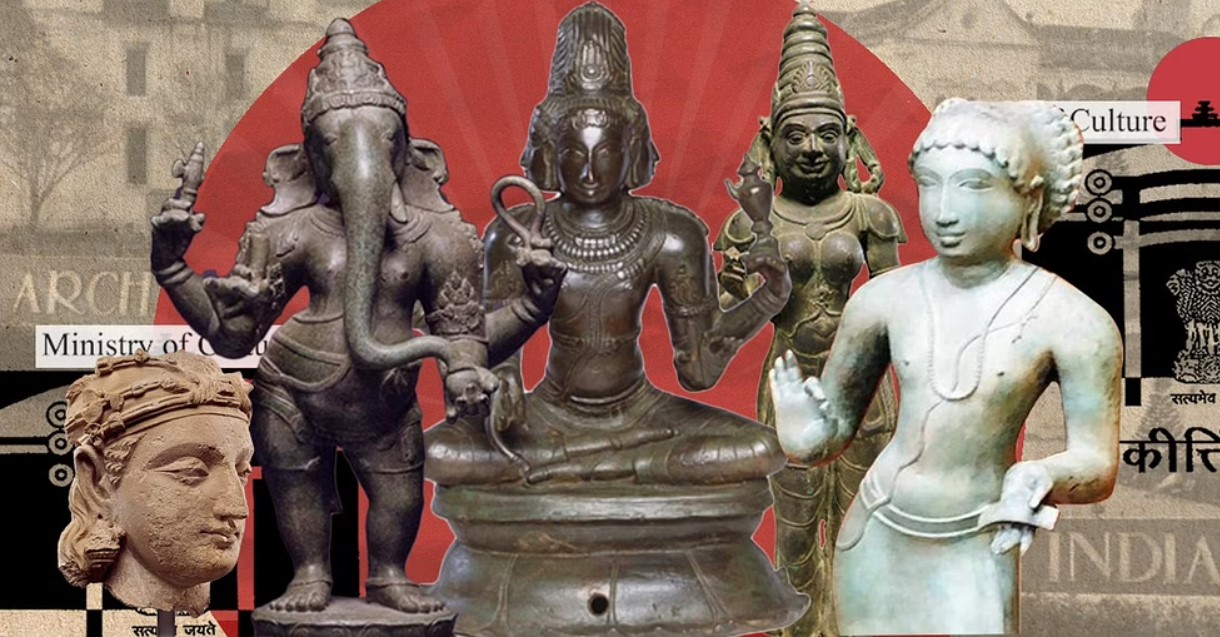Last Monday, the Government of Tamil Nadu in Delhi received ten antiquities (sculptures) rescued from Australia and the United States. “Bringing Our Gods Home is a government programme anchored in protecting, promoting, and spreading our history,” Union Culture Minister G Kishan Reddy remarked during the occasion. He said that from Independence and 2013, only 13 antiques were returned to India, compared to 228 artefacts after 2014.

The sculptures and the story behind them being stolen:
Dvarapala: This stone sculpture is from the Vijayanagar kingdom and dates from the 15th-16th century. It was discovered in Australia in 2020. In one hand, he holds a gada, while his other leg is elevated to the level of his knee. In 1994, the sculpture was stolen from Tiruneveli’s Moondreeswaramudayar Temple.
Nataraja: This picture of Nataraja, a portrayal of Shiva in his holy cosmic dancing form, is in tribhanga stance, standing on the lotus pedestal, and was retrieved from the US in 2021. It’s from the 11th or 12th century. Ananda tandava, or the Dance of Bliss, may be shown here. In 2018, the sculpture was stolen from the Punnainallur Arulmigu Mariyamman Temple’s strong room in Thanjavur.
Kankalamurti: A terrifying aspect of Lord Shiva and Bhairava, Kankalamurti was retrieved from the US in 2021. The sculpture is four-armed, with damaru and trishula ayudhas in the upper hands and a bowl and a trefoil-shaped item in the lower right hand as a reward for the playful fawn. The idol, which dates from the 12th to 13th centuries, was taken from Tirunelveli’s Narasinganadhar Swamy Temple in 1985.
Nandikeshvara: This bronze picture of Nandikeshvara, dated to the 13th century and retrieved from the United States in 2021, depicts him standing in tribhanga position with folded arms, holding an axe and a fawn in his upper arms, and his forearms in namaskara mudra. In 1985, this sculpture was taken from Tirunelveli’s Narasinganadhar Swamy Temple.











